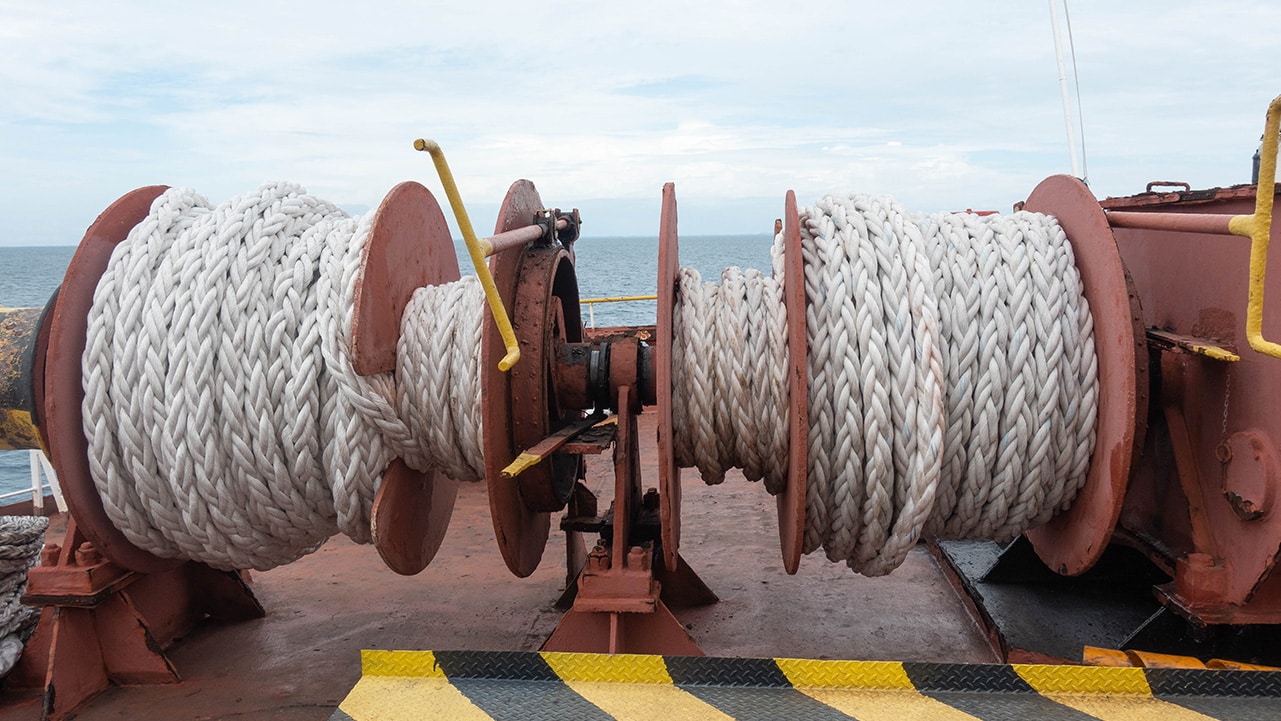Understand the importance of the Mooring Winch Brake Render Testing in maintaining and ensuring safe mooring operations. This course is designed to provide you with in-depth knowledge about the Break Holding Capacity (BHC) test, a cornerstone of mooring operations. In light of several accidents due to negligence or incorrect performance of BHC tests, this course emphasizes the necessity of regular render testing and calibration of the winch brakes. You will learn about the crucial actions and procedures that need to be taken before, during, and after the test.
What is a mooring winch brake ?
A mooring winch brake is a crucial component of a ship’s mooring system. It’s designed to hold a ship in place at a berth, and it plays an essential role in managing the tension and slack of the mooring lines during mooring operations.
The mooring winch brake works by applying friction to the winch drum, which enables it to hold or let out the mooring line under controlled conditions. The brake’s holding ability, also known as the Brake Holding Capacity (BHC), is of utmost importance for the safety of the vessel and the crew. It must be properly tested and maintained to ensure it can effectively hold the line tension under different load conditions.
Key Learning Objectives
This course aims to provide learners with the fundamental knowledge and skills necessary to understand the actions and procedures that must be taken before, during, and after the test. It also aims to familiarize learners with the following topics: Brake Holding Capacity test and procedures, the relationship between the Brake Holding Limit and mooring equipment, the importance of BHC testing for mooring operations, BHC marking and operational use, the purpose of mooring line layers on split drum winches, the risks associated with over-tightening or under-tightening winch brakes, and generally, the risks and assessments related to the BHC test.
By the end of this course, you will be able to:
- Appreciate the importance of brake render testing for mooring operations.
- Understand the brake holding limit, as well as the hazards of the test and best practice guidelines.
- Comprehend the actions and procedures that must be taken before, during, and after the test.
Course Contents
Key topics covered in this course include:
- Comprehensive understanding of Break Holding Capacity test and its procedures.
- Examination of the relationship between the Brake holding limit and mooring equipment.
- Discussion on the essential role of BHC testing for safe and efficient mooring operations.
- Insight into BHC marking and its operational use.
- Detailed study of the mooring line layers on split drum winches and their purpose.
- Examination of risks involved with over-tightening or under-tightening of the winch brakes.
- In-depth analysis of BHC test risks and assessment.
By the end of this course, you will be well-versed in the critical aspects of mooring winch brake render testing, greatly enhancing your skills in ensuring safe mooring operations.
Who Should Attend?
- Crew, especially those practicing the mooring winch render testing
- Marine operators, Superintendents
Course Delivery Method
- The course leverages an interactive digital platform that offers learners flexibility to study at their own pace through engaging multimedia content such as videos, animations, quizzes alongside simulations resembling real-life situations.
Duration: 30min
Approval: ABS






